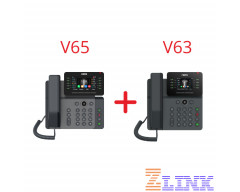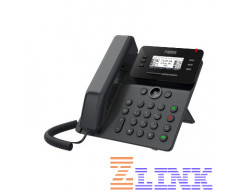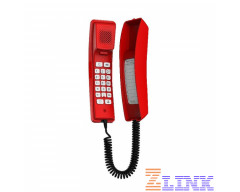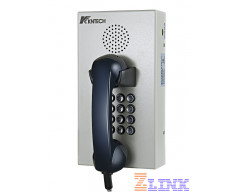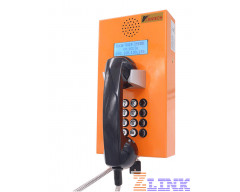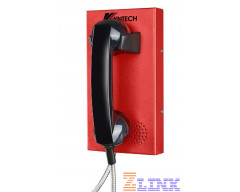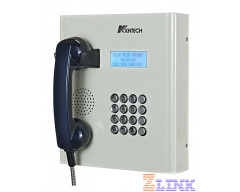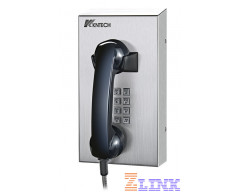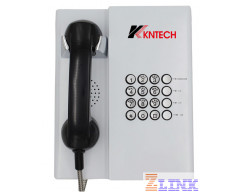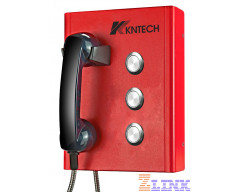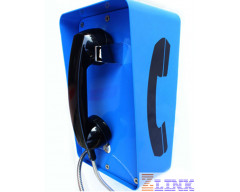A VoIP phone or IP Phone uses Voice over IP (Voice over Internet Protocol - VoIP) technologies for placing and...
A VoIP phone or IP Phone uses Voice over IP (Voice over Internet Protocol - VoIP) technologies for placing and transmitting telephone calls over an IP network, such as the Internet, instead of the traditional public switched telephone network (PSTN).
Digital IP-based telephone service uses control protocols such as the Session Initiation Protocol (SIP), Skinny Client Control Protocol (SCCP) or various other proprietary protocols.
VoIP phones can be simple software-based softphones or purpose-built hardware devices that appear much like an ordinary telephone or a cordless phone. Traditional PSTN phones are used as VoIP phones with analog telephone adapters (ATA).
Two combined signal-and-power wired cable interfaces are in common use to communicate between computer networks (or computers) and physically separate VoIP phones: USB and Power over Ethernet. The latter is preferred in industry such as large scale call centers or PBX replacement applications, because PoE has the following advantages over USB:
Much greater and more flexible power allocation: PoE switches typically support 4, 8, 16, 24, 48 or more ports each, with each device drawing up to 30W. By contrast, a USB 3.0 only supports up to 4.5W devices, insufficient for cordless, conference, videoconferencing and other common-use devices.
Much greater cord range. While DC power diminishes rapidly over long cables, and is inefficient to supply further than 3M for high-draw devices, the low power draw of modern indoor radios permits full use of cat5 Ethernet cables of up to 100m length. By contrast USB supports under 3m and with extensions and boosters perhaps 10m maximum.
Single connector: PoE relies on the single uniform rj-45 connector, a close relative of the proven RJ-11 connector used for analog phones. By contrast there are six USB connectors and each change to the USB standard so far has involved at least one new type of connector.
Ethernet protocol: Scalable from its original 1 megabit to modern 100 gigabit applications, copper Ethernet has no peer for scalability. It makes effective use of many different cable types (especially cat3 and coaxial cable) and has robust wireless equivalents (802.11/WiFi) when power and wired security is not required.
For these reasons, USB and softphone PC applications are considered transitional by many industrial users and makers of larger telephone switches, used only to build markets for VoIP that will eventually shift over to the more robust PoE technology shipped by Cisco, Siemens, Alcatel and other large switch makers.
A VoIP phone or application may have many features an analog phone doesn't support, such as e-mail-like IDs for contacts that may be easier to remember than names or phone numbers, or easy sharing of contact lists among multiple accounts. Generally the features of VoIP phones follow those of Skype, Google Voice and other PC-based phone services, which have richer feature sets but (because they rely on mainstream operating systems' IP support) latency-related audio problems.
A competing view is that as mainstream operating systems become better at voice applications with appropriate Quality of Service (QoS) guarantees and 5G handoff (IEEE 802.21 etc.) becomes available from outdoor wireless carriers, netbooks and smartphones will simply become the dominant interfaces. iPhone, Android and the QNX OS used in 2012-and-later BlackBerry phones are generally capable of VoIP performance even on small battery-charged devices. They also typically support the USB but not Ethernet or Power over Ethernet interfaces, at least as of late 2011. According to this view, the smartphone becomes the dominant VoIP phone because it works both indoors and outdoors and shifts base stations/protocols easily to trade off access costs and call clarity and other factors personal to the user, and the PoE/USB VoIP phone is thus the transitional device.





